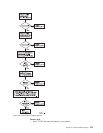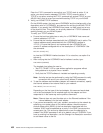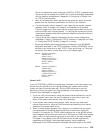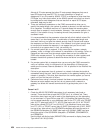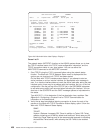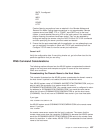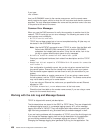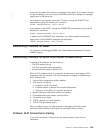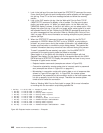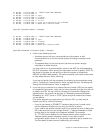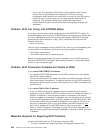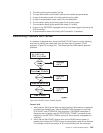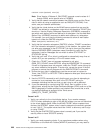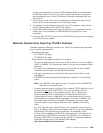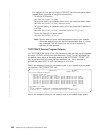
must end then restart the server for the change to take effect. If you want to change
the job immediately, you must use the CHGJOB command to change the message
logging level of the active job.
For example, if the problem is with the FTP server, change the QTMFTPS job
description by typing the following CL command:
CHGJOBD JOBD(QTCP/QTMFTPS) LOG(4 0 *SECLVL)
If the problem is with SMTP, change the QTMSMTPS job description by typing the
following CL command:
CHGJOBD JOBD(QTCP/QTMSMTPS) LOG(4 0 *SECLVL)
In addition to the QTMSMTPS job description, you might consider changing the
logging level of the QSNADS subsystem job description:
CHGJOBD JOBD(QGPL/QSNADS) LOG(4 0 *SECLVL)
Determining Problems for SNMP
For information on debugging SNMP, see
Simple Network Management Protocol
(SNMP) Support
.
Determining Problems for Serial Line Internet Protocol (SLIP)
To debug SLIP problems, use the following:
v The SLIP session job log
v The SLIP connection script spooled file
v A communications trace of the ASC line.
When a SLIP problem occurs, it is important to determine at what stage of SLIP
processing the error occurred. The normal sequence of stages for establishing a
SLIP connection are:
1. Point-to-Point configuration profile validation
2. SLIP session job startup
a. Validation of ASC line values
b. Possible creation of device and controller descriptions
c. Varying on of the ASC line, controller and device
3. Modem reset and initialization (unless null modem)
4. Call establishment and modem synchronization
5. Connection script dialog
6. TCP/IP interface and route activation
7. TCP/IP SLIP processing begins.
When a problem occurs, the three sources of debugging information listed
previously should indicate at what point the connection failed, and why.
Problem: SLIP Connection Is Failing
If your SLIP connection is failing, there are several places to look for error
indications:
Chapter 21. TCP/IP Problem Analysis 439
|
|
|



